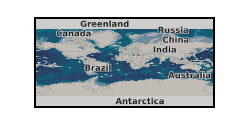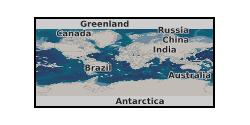Image analysis
Type of resources
Topics
Keywords
Contact for the resource
Provided by
Years
Formats
Update frequencies
-

P* data obtained through hydrostatic loading experiments, using triaxial experimental apparatus, as well as yield curve data obtained through differential loading tests, prior to the discovery of P* for different synthetic sandstones. The methodology used was taken from Bedford et al. (2018, 2019). Grain size analysis data obtained using a Beckman Coulter LS 13 320 laser diffraction particle size analyser. Particle analysis was conducted on five different synthetic sandstones with different grain size distributions. Secondary electron and backscatter electron SEM images for natural and synthetic sandstones. Secondary electron images were stitched together to form a whole core image. They were then binarised following the methodology of Rabbani and Ayatollahi. (2015). Hexagon grid size data used to obtain the correct grid size for performing porosity analysis across an mage using Fiji software (Brown, 2000). Bedford, J. D., Faulkner, D. R., Leclère, H., & Wheeler, J. (2018). High-Resolution Mapping of Yield Curve Shape and Evolution for Porous Rock: The Effect of Inelastic Compaction on 476 Porous Bassanite. Journal of Geophysical Research: Solid Earth, 123(2), 1217–1234. Bedford, J. D., Faulkner, D. R., Wheeler, J., & Leclère, H. (2019). High-resolution mapping of yield curve shape and evolution for high porosity sandstone. Journal of Geophysical Research: Solid Earth. Brown, G. O., Hsieh, H. T., & Lucero, D. A. (2000). Evaluation of laboratory dolomite core sample size using representative elementary volume concepts. Water Resources Research, 36(5), 484 1199–1207. Rabbani, A., & Ayatollahi, S. (2015). Comparing three image processing algorithms to estimate the grain-size distribution of porous rocks from binary 2D images and sensitivity analysis of the grain overlapping degree. Special Topics & Reviews in Porous Media: An International Journal, 6(1).
-

Image data published in AGU paper "Estimation of Capillary Pressure in Unconventional Reservoirs Using Thermodynamic Analysis of Pore Images". The images of unconventional shale rock pores were captured using nano-CT and SEM imaging methods. Images are segmented into fluid (or pore) and rock phases and are stored in RGB format as JPG files. Images were used to produce the plots and data presented in the above referenced paper.
 BGS Data Catalogue
BGS Data Catalogue